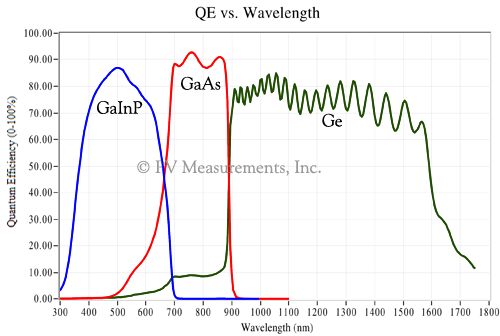Impact on devices and degradation of solar cells
Space radiation strongly influences the technology on-board a spacecraft and the solar cells that power it. In case of extreme events, radiation incident on electronics can cause permanent defects in the devices, degrading their performance. Some common adverse Space Weather effects on spacecraft/satellites are the erroneous signals in the electronics caused by radiation passing through the shielding, and spacecraft charging, i.e. the phenomenon by which the accumulation of electrostatic charge on the spacecraft's surface finally causes sudden discharges, which again lead to erroneous signals in the electronics. A main problem is the degradation of the performance of solar cells. Solar cells are a fundamental component of Space probes, as they are needed to generate the required power for guidance, navigation, control, instrumentation, thermal control, communications, data handling, and many other subsystems. Trapped radiation, solar protons and GCRs create atomic defects in the materials constituting the solar cells, by displacing atoms, and they modify the electronic current, reducing the solar cell power output.

At present, the most efficient solar cells currently in production are multi-junction solar cells, which use a combination of several layers of GaAs, GaInP and Ge to capture more energy from the solar spectrum [1,2]. The band gap obviously determine the energy at which the absorption generally starts. Space solar cells are protected by a cover glass (made by cerium oxide), which mostly slows down the whole proton spectrum and high energy particles. According to the overall damage, the solar cell output (short-circuit current, open-circuit voltage, output power) is reduced.
The major type of radiation damage in space solar cells are ionization (mainly for the coverglass material) and atomic displacements (for the cell itself) due to high energy protons and electrons (although, low-energy protons can also cause problems). Ionizing radiation can reduce the transmittance of the solar cover glasses through the development of color centers in the oxide: these occur when electrons excited by the radiation become trapped by impurity atoms in the oxide to form stable defect complexes. Thick cover glasses protect the cell from the highly damaging low-energy protons, but also induce a relevant decrease in the power of the solar cell. Such decrease can be limited by using concentrators design [3,4].
The damage in the very solar cells layers is mainly caused by non-ionizing energy losses, in particular atomic displacements as said above. Displacement Damage is the result of nuclear interactions (high energy) AND interactions with nuclei (low energy, below the regime of nuclear fragmentation). The collision between an incoming particle (the original projectile or an atom that has already been displaced and act as new projectile) displaces the atom from its original lattice position, and a cascade of collisions occurs. Defects (vacancies, interstitials, Frenkel pairs, dislocations) produced along tracks of secondary particles and in clusters at the end of the tracks. Electronic defect states in the gap trap minority charge carriers, reducing the output current.
Nowadays, Geant4 (a "condensed history" Monte Carlo particle transport tool) is widely used to study the (first-stage) radiation damage in solid targets. However, it presents several limitations that could be overcome by current first-principles approach in condensed matter/materials science: the electronic stopping power is described by the Bethe-Bloch theory (+high-order corrections), which is a perturbative approach with applicability limited to high projectile energies (E/n>10 MeV), well away from the Bragg peak; the Lindhard dielectric theory (homogeneous gas) is used at lower energies (E<2 MeV) and a parametrization at intermediate energies; there is a lack of many body interactions and no synergy between nuclear and electronic stopping. The used Binary Collision Approximation (BCA), in which the interaction between incident particle and the target is seen as successive independent two-body collisions, while allowing to follow the trajectory of all primaries and secondaries generated, is considered to break down <1 keV. The target materials are considered to be amorphous, and thus the main relevant quantity for the atomic displacements, the threshold displacement energy, does not depend on crytalline directions, and neither on the synergy with electronic excitations.
[1] M. Meyer, R. A. Metzger, Flying High, Compound Semiconductor, Special Issue, 40 (1997).
[2] T. Torchynska, G. Polupan, F. C. Zelocuatecatl, E. Scherbina, Modern Phys. Lett. 15, 593 (2001).
[3] S. Bailey and R. Raffaelle, Space Solar Cells and Arrays, in Handbook of Photovoltaic Science and Engineering, Edited by A. Luque and D. Hegedus, 2003, John Wiley and Sons, Ltd.
[4] A. De Luca, Architectural design criteria for spacecraft solar arrays.INTECH Open Access Publish (2011).
Contact: BIRA-IASB, Av. Circulaire 3, Brussels, Belgium.
